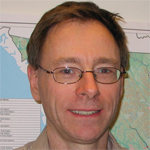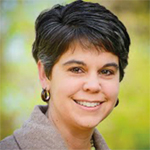Background: A Southern California native, Dr. Poole has traveled far and wide in her career. She earned her bachelor’s degree in occupational therapy from Colorado State University in Fort Collins in 1975. She earned her master’s from the University of North Carolina in Chapel Hill, N.C. in 1984, and then her PhD from the University of Pittsburgh in 1995. She has been at the University of New Mexico since the summer of 1983. But it was during a stint in the late 1970s at the Towers Rehabilitation Unit at the University of Virginia Hospital that she began working with people with arthritis. Her next position, in Pittsburgh working under Drs. Thomas Medsger and Virginia Steen, helped develop her interest in scleroderma.
“I met Dr. Medsger the second day of my job, as he wanted an occupational therapist to come to scleroderma clinic and evaluate people’s hand function and follow them over time. Drs. Medsger and Steen and their patients taught me about scleroderma and how the disease affected the patients. They were compassionate and dedicated and helped me see the need for occupational therapy.” Since the mid-1980s, she’s been an active member of ARHP and has served on multiple committees. She is a frequent presenter at meetings, and recently presented at both the patient and medical conferences at the Second World Congress in Madrid.
Q: What was the experience of presenting at both conferences of the Second World Congress like?
A: It was great to present at both. Speaking at the patient conference was different than what I have done in the U.S., as there were so many people. Usually, I can walk around and actually show and watch people do the exercises. It was hard to do in a big group, but manageable. I think that speaking at patient conferences is very important, as many patients have not been referred to occupational therapy and do not know about the hand and face exercises for people with scleroderma and some of the assistive devices that can help manage daily activities. Hopefully, knowing about these and occupational therapy will encourage patients to ask their rheumatologists for a referral to therapy. As far as speaking at the medical conference, it was an opportunity to talk about the evidence for interventions to improve hand function in people with scleroderma, again, so rheumatologists know that therapy is important, there is evidence supporting the interventions, and therapy can make changes in their patients.



